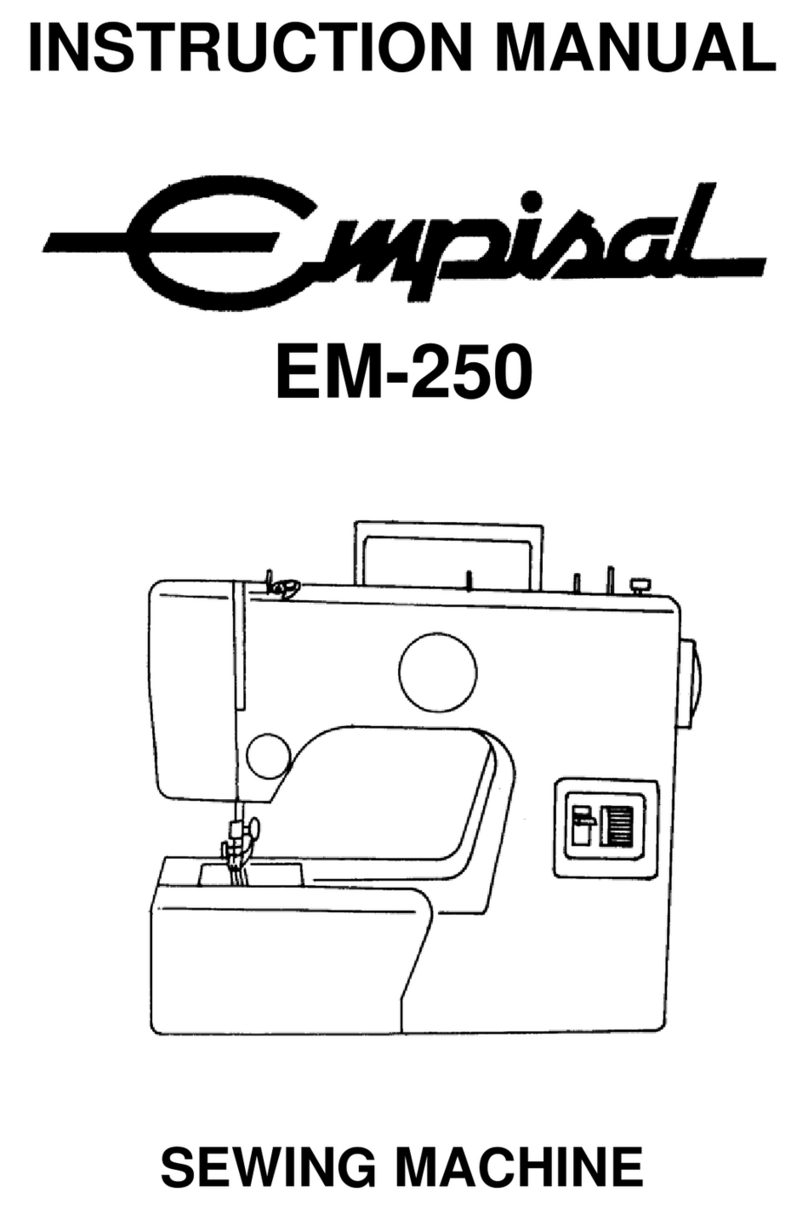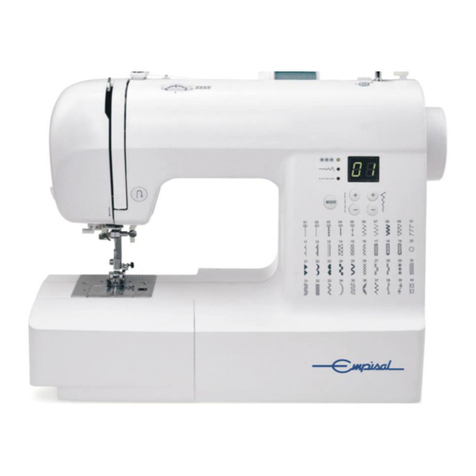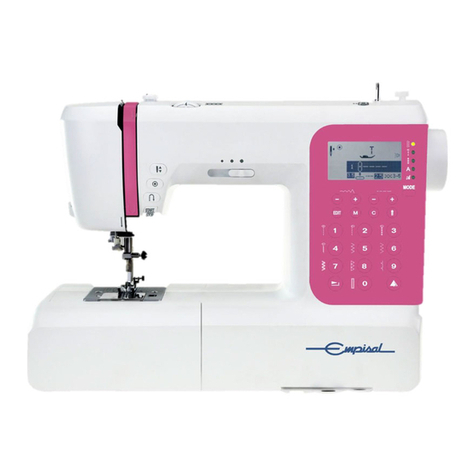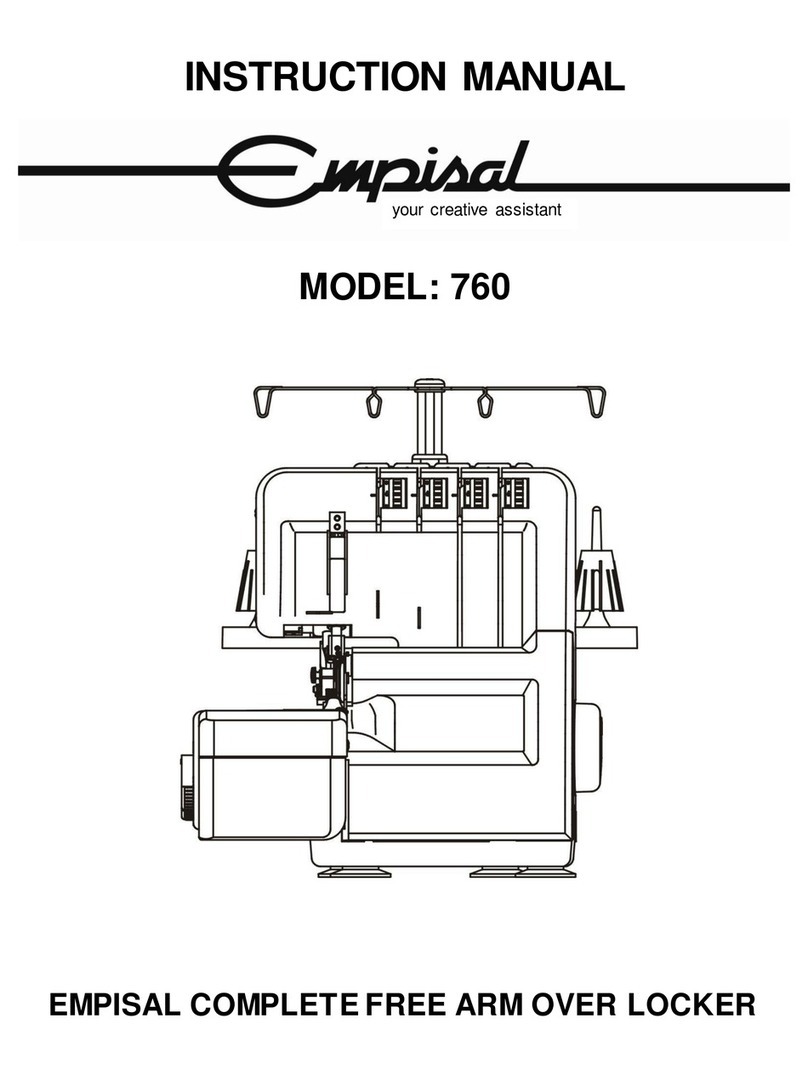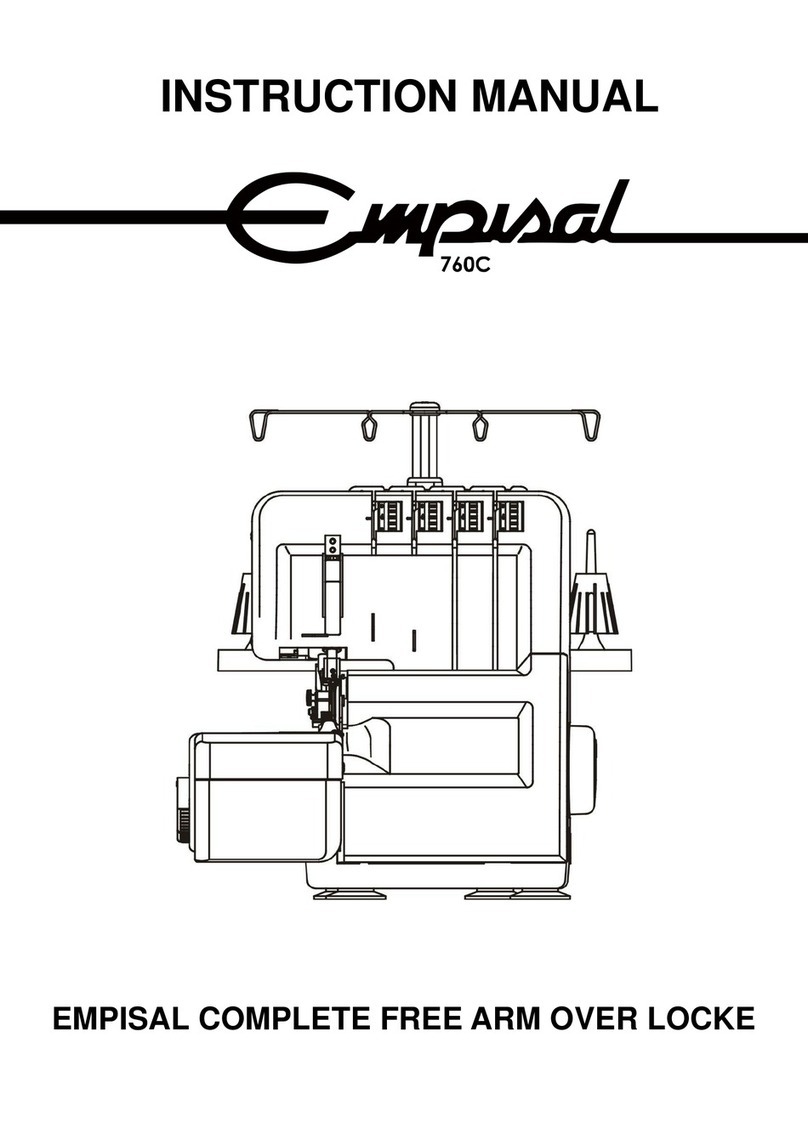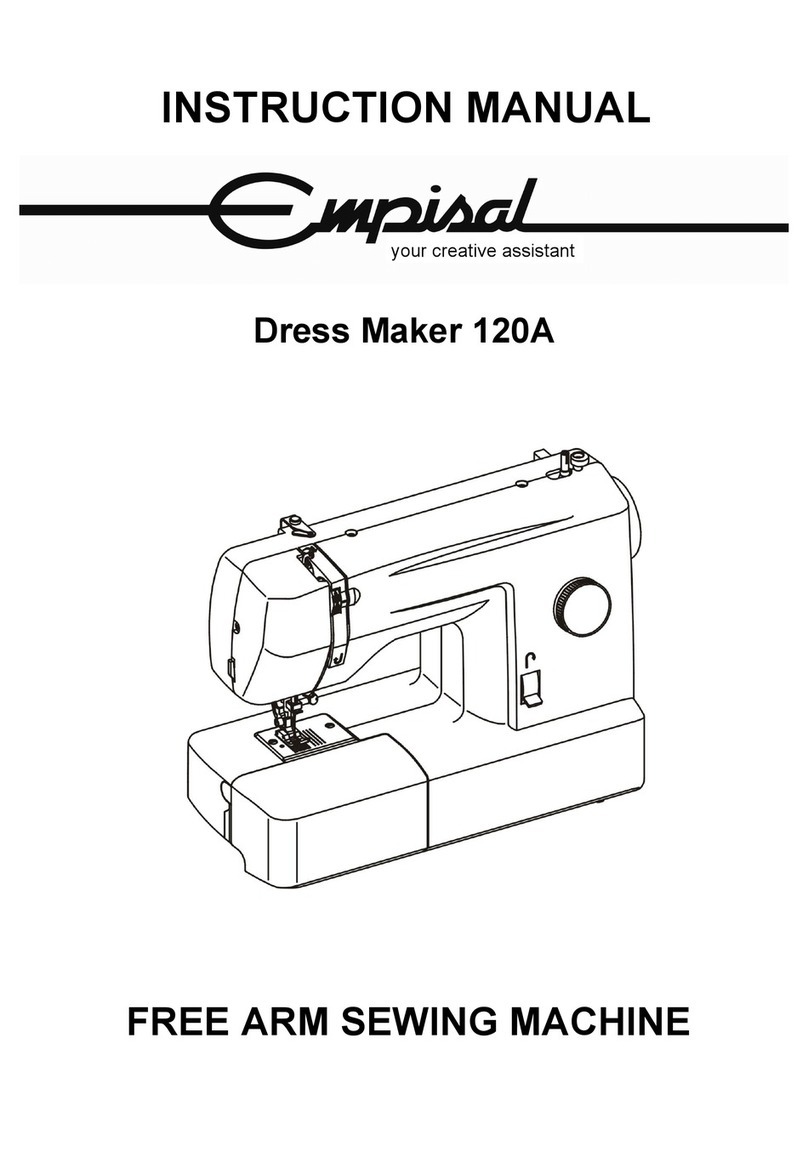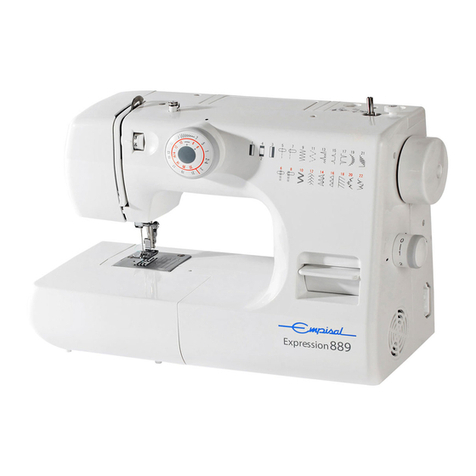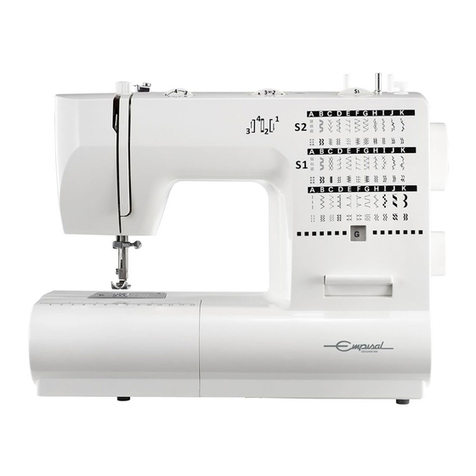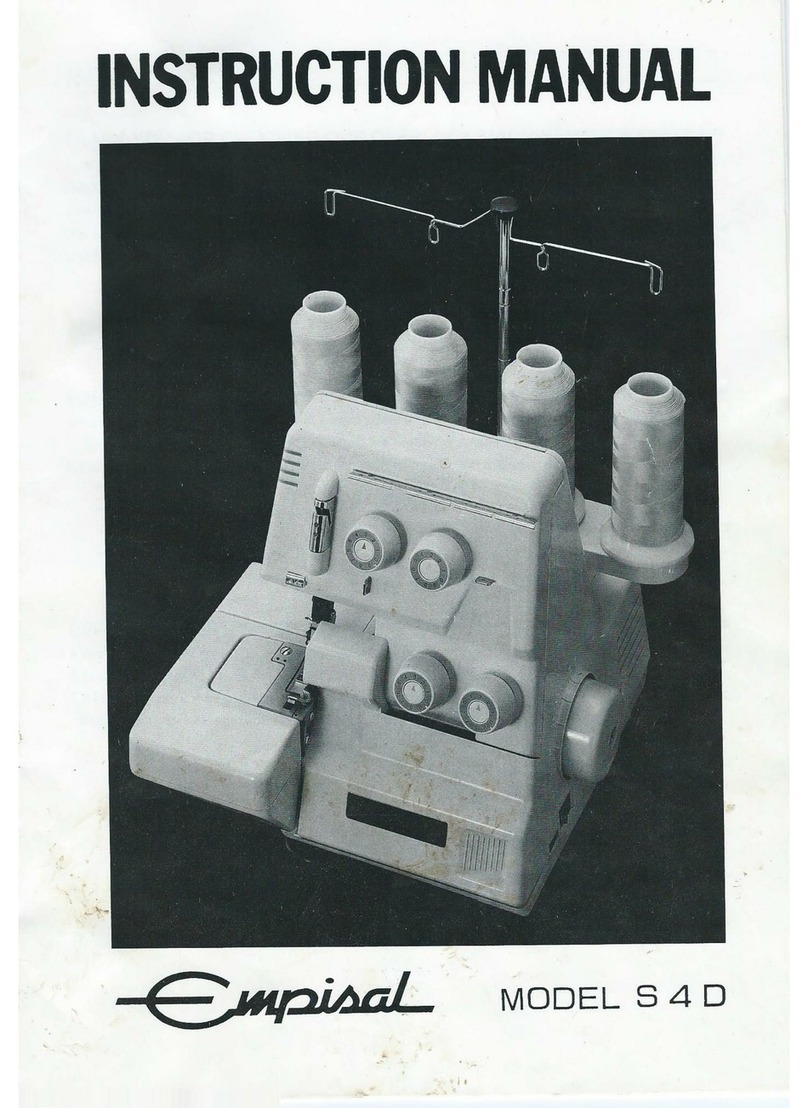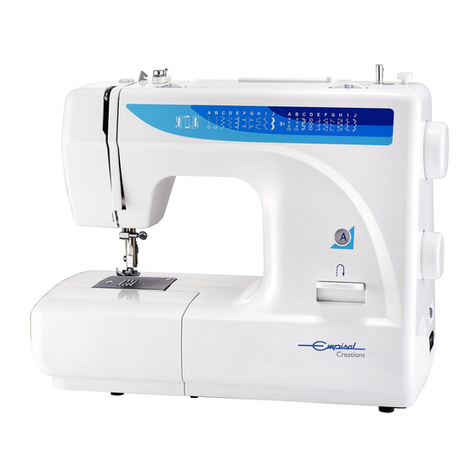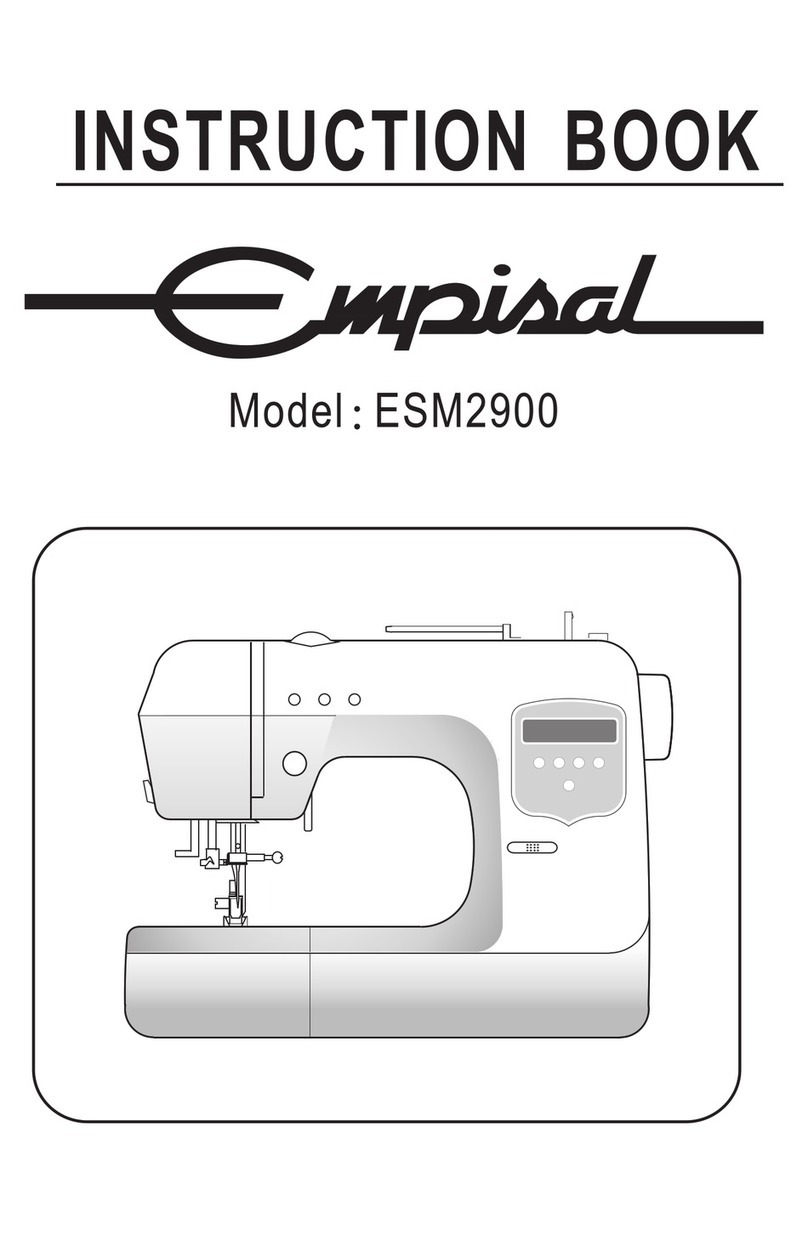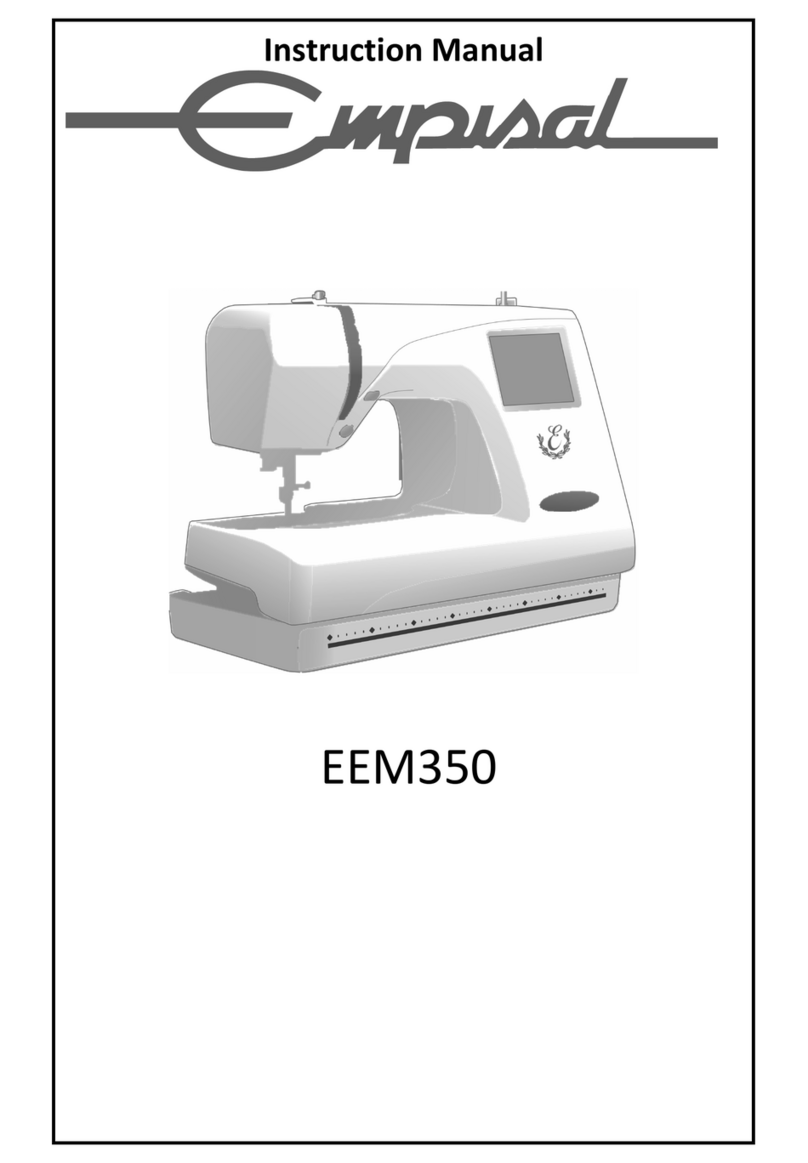
HOW TO CONNECT THE MACHINE TO THE POWER SUPPLY
1. Fit the machine plug into the machine"
2. Plug the machine to the power supply.
Note:*Belcre plugging in the machine, ensure that the voltage and
number of cycles indicated, is conformed to your electrical
power supply.
HOW TO USE THE FOOTCONTROL
Sewing speed can be varied by the foot control. The harder you
press on the controller. the faster the mach ine runs.
Note:*By releasing the controller, the machine stops running auto-
matically.
*Before using the machine, practice controlling the speed
with-out threading.
SEWING LAMP
The sewing lamp is located behind the face plate.
Bulb type (Ai : . To remove Unscren
a To replace ... Sc.ew
Bulb type (Bl : o To remove ... Pusn and :\.,,;st counter-clockwise
a To replace ... Push anc I\i, st ciockwrse
Note:*Before replacing a bulb, disconnec: lne mach ne f ron^ the
power supply.
*Bulbs are available from sewing machine retailers, (Use a 15-
Watt bulb) Caution!
Before leaving the machine, changing parts or doing any other work
on it, always disconnect the plug from the wall socket.
(n (s
I
i
-6
FABR ICS THREADS
Sheer cottons, Silk,
Synthetics, Georgette
NEEDLE SIZE
LIGHT
WEIGHT 9or 11
MEDIUM
WIGHT Med;um \te ght Cottons, Sr'":hetrcs.
Poo :, \/eivet. L gr: ,', e gnt ,', v- s
50 silk
50 to 80 Cotton
50 to 60 Synthetic
Cotton Covered Polyester 'l l clr 14
HEAVY
WEIGHT Heavy Weight cottons, Denim
Tweed, Gaberdine, Drapery
50 sitk
40 to 50 Cotton
40 to 50 Synthetic
Cotton Covered Polyester 14 or 16
THREAD AND NEEDLE CHART
*ln general, fine threads and needles are used for sewing thin fabrics, and thicker threads and needles are
used for sewing heavy fabrics. Always test thread and needle size on a small piece of fabric which will
be used for actual sewing.
*Use the same thread for needle and bobbin.
*When sewing stretch, very fine fabrics and synthetics, use a BLUE SHANK needle. The blue shank
aeedle effectively prevents skipped stitches.
'iVrrer^ seyving very fine fabrics, sew over a piece of paper to prevent yarn distortion.
Note
Fine Silk
Fine Cotton
Fine Synthetic
Fine Cotton Covered Polyester
